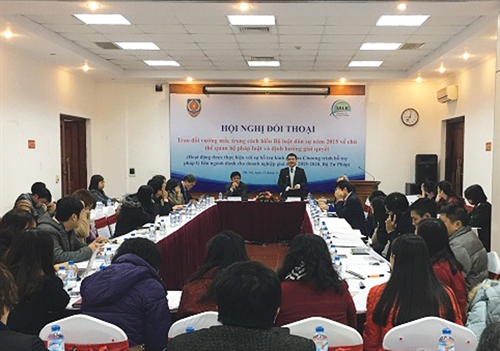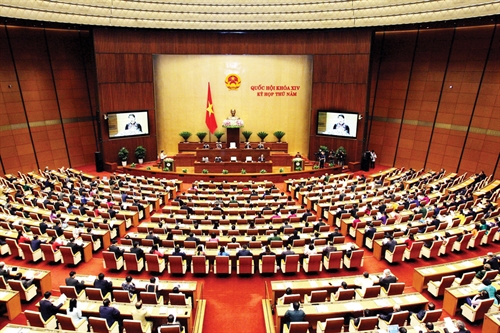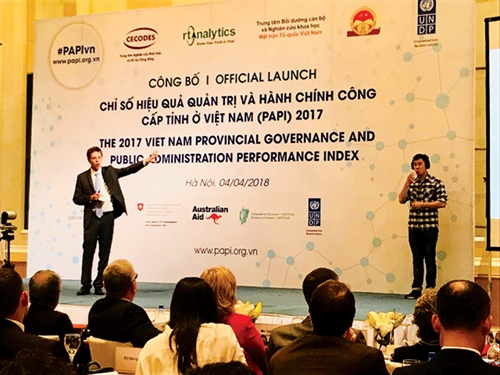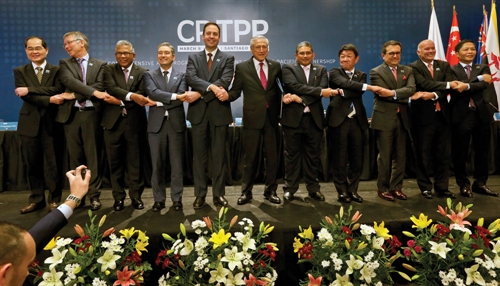In this article, the author discusses the provisions on private and common ownership in the 2015 Civil Code and presents some notes on their application by the courts in Vietnam.
Tuong Duy Luong
Lawyer, arbitrator of Vietnam International Arbitration Center
Ownership rules constitute an important part in civil laws of modern states and Vietnam is not an exception. The country’s civil codes enacted in 1995, 2005 and 2015 have been designed in the direction of regarding ownership as a fundamental institution. The 2015 Civil Code (the 2015 Code) inherits provisions on ownership from its predecessors and makes new, breakthrough ones to suit the socio-economic development in the new period.
While the 1995 and 2005 Civil Codes provide seven and six forms of ownership, respectively, the 2015 Code gives only three forms of ownership based on the number of owners. The first form is ownership by the entire people with the State acting as the representative to exercise the owner’s rights over, and the Government performing the unified management and ensuring the proper, efficient and thrifty use of, property under ownership by the entire people. The second form is private ownership, which is understood as ownership by an individual or a legal person over a property. And the third is common ownership, referring to ownership by multiple entities over a property.
 |
| People in Rach Gia city, Kien Giang province, fill in the land registration formalities at the city’s land registry office__Photo: Le Sen/VNA |
Private ownership
According to Article 205 of the 2015 Code, private ownership can be understood as ownership by a single entity, may it be an individual or a legal person, over a property.
An individual is a natural person and any individual can become the owner of one or more than one property, regardless of whether or not he has full act capacity, has lost his act capacity or has his act capacity restricted. However, the difference between an owner with full act capacity and an owner with lost or restricted act capacity arises when it comes to the exercise of the owner’s rights (rights to possess, use and dispose of property), that is, the former can himself exercise his rights but the latter may only do so through his guardian or representative.
Private ownership may be also ownership by a legal person. A legal person is always an organization but not all organizations have the legal person status. An organization will be recognized as a legal person only when it satisfies all the conditions specified in Article 74 of the 2015 Code. Property of a legal person may be formed from capital contributions of the owner, founders, or members of the legal person or from the state budget, accumulated in the process of production and business, or inherited or donated. A legal person may exercise the owner’s rights through acts of its at-law or authorized representative.
Also according to Article 205, the quantity and value of property under private ownership of an individual or a legal person are not restricted as long as such property is acquired in a lawful manner.
Since private ownership over property is an important civil right of citizens, it must be respected by all. This provision helps people feel at ease to develop private ownership and no fear of having this right deprived illegally.
Property under private ownership may be means of living as well as means of production. That the 2015 Code sets no restriction on the quantity and value of lawful property under private ownership will stimulate the accumulation of means of production of individuals and legal persons in their production process. However, it should be noted that unrestricted private ownership of property does not naturally mean unrestricted exploitation and circulation of property. There are some types of property subjected by law to circulation restrictions or conditions, meaning that the circulation of such property must comply with relevant regulations. For instance, an individual may store gold and US dollars in an unlimited quantity but may not exchange them in the market like ordinary types of property.
The Government’s ongoing efforts to support the development of private businesses are messages expressing the concretization of the provisions of economic laws in general and of the 2015 Code in particular guaranteeing the rights of every entity in private ownership and use of property under private ownership for national economic development.
A society may be stable and an economic order may be formed and develop sustainably only when ownership by every entity is respected and protected provided that, when exploiting benefits from its property, an entity must not harm the interests of other entities. In that spirit, the 2015 Code, on the one hand, affirms the owner’s rights to freedom and self-decision over the property under his private ownership and, on the other hand, sets restrictions on these rights. One of these restrictions is that the owner of a property has the right to possess, use and dispose of such property to meet his daily-life, production and business needs and for other purposes not contrary to the law. Another restriction is that the possession, use and disposal of a property under private ownership must not damage or affect the national interests, public interests or lawful rights and interests of others.
Managers as well as practitioners should be aware that the above provisions constitute a legal corridor to guarantee equality among entities in owning and benefiting from their property and ensure their safety and harmony of their interests in society.
In the process of dispute settlement or management, managers and judicial bodies should base themselves on this legal corridor to deal with specific relations in an appropriate and lawful manner. Reality shows that managers sometimes ignored the principle of freedom and voluntariness in the disposition of private ownership and thus put forward inappropriate solutions, such as the proposal to restrict ownership over personal vehicles. To tackle traffic jams, managers can put forward different solutions, such as restriction or ban on vehicles operating in certain areas, but ban or restriction on ownership over property is an infringement upon this right.
Common ownership and its types
Article 207.1 of the 2015 Code defines common ownership as ownership by multiple entities over a property. These entities may be individuals or legal persons or both that jointly own one or more than one property. The law does not restrict private ownership, meaning that it does not restrict common ownership either, except special assets like agricultural land use rights, which are restricted based on land quotas prescribed in the current land law. However, such restriction on land ownership will not be maintained in the long term and will be replaced with another mechanism to both guarantee the interests of farmers and encourage land accumulation for large-scale production.
Facing no restriction on the quantity and value of property under common ownership, except land use rights, the entities have ample opportunities to cooperate with one another in developing their common property and expanding the scale of production and business activities.
Common ownership is divided into common ownership by share and common ownership by integration.
Common ownership by share
Common ownership by share means common ownership in which each owner’s share of ownership rights is determined over the common property. This type of common ownership is popular in society.
In this type of common ownership, shares of the owners are not naturally equal. In other words, the owners may have equal or unequal shares of ownership rights over one property. Each owner cannot know which part of the common property comes under his ownership when it is not clearly determined.
Article 216.2 of the 2005 Civil Code and Article 209.2 of the 2015 Code both affirm “Each owner of a property under common ownership by share has his rights and obligations over such property corresponding to his share of ownership rights, unless otherwise agreed upon.” Concerning this provision, there are now two sets of opinions. According to the first set of opinions, this provision implies that each owner has no right over the whole common property. Should somebody illegally possess the common property, one owner cannot initiate a lawsuit to claim the property unless he is authorized by other owners to do so. Each owner also knows his/its share of ownership rights over the common property and may only exercise his/its rights over such share.
The author shares the second set of opinions that the above provision should be interpreted from two angles. First, it demonstrates the relationship among the co-owners themselves in which the rights and obligations of each owner over the common property must not exceed his share of ownership rights. More specifically, each owner may neither dispose of part of the property nor be required to perform an obligation (such as maintenance and repair) in excess of his share of ownership rights.
In the relationship among the co-owners themselves and between the co-owners and other entities, their rights and obligations are also based on each owner’s share of ownership rights. For instance, regarding the liability to compensate for damage caused by a property under common ownership, each owner of such property is liable to pay only a compensation in proportion to his share of ownership rights. However, it should be noted that there are few cases in which the common ownership still exists after each owner’s specific share of ownership rights over the common property has been determined. In most cases, once specific parts of a (divisible) property under common ownership have been determined according to a lawful process for each owner corresponding to his share of ownership rights, the common ownership by share will terminate, giving way to the establishment of private ownership by each owner over his part of the property.
 |
| Round-table conference discusses divergent ways of understanding the Civil Code held on December 12, 2017, in Hanoi__Photo: https://moj.gov.vn |
Also, the above provision does not mean that each owner has neither the right to protect nor the obligation to preserve the whole common property. The reason is that each owner’s share of ownership rights cannot be detached or separated from the common property (because once this share of ownership rights has been identified, the common ownership will no longer exist). Moreover, the co-owners may know only the proportions of their shares of ownership rights over the common property or in some cases they do not know their exact shares. Here is an example. Three persons jointly make and bake bricks for four months. After that they use these bricks to build a house as their common property. Without prior agreement, none of them know his exact share of ownership rights over this house because their health conditions, financial contributions, working hours and tasks are different. To determine their specific shares of ownership rights, they must themselves reach agreement or request a competent body to determine their shares. For the above reasons, each owner of a property under common ownership by share has the right to protect and the obligation to preserve the whole property but not only the part of the property corresponding to his share of ownership rights. Let us take another example. Three persons co-own a five-room house and their shares of ownership rights are equal. In this case, each owner, although not knowing which area of the house comes under his ownership, knows clearly that he has the right to own one-third of this house and to protect the integrity of the house. If a person illegally possesses the house, then all or any of the three co-owners may request such person to return the house to them and file a petition with a competent body to protect their ownership rights over the house.
Due to their improper understanding of this issue, some local courts rejected petitions lodged by one or some of the co-owners or heirs of a common property to claim back the property which has been appropriated by another person. The courts requested the petition be undersigned by all co-owners or heirs or by a co-owner or an heir authorized by others.
In case the co-owners cannot reach agreement with one another in determining each owner’s share of ownership rights over their common property, they may request the court to determine. The court will base itself on the efforts, money, etc., contributed by each owner to determine his share of ownership rights. In case the co-owners have known well their shares of ownership rights but cannot reach agreement on the method of dividing the property (in case it is a house or land use rights), each owner may also request the court to rule on the division. The court will base on each owner’s request and the practical state of the property to divide the property. Any owner who receives part of the property in excess of his share of ownership rights will have to pay the excessive value to the eligible owner.
It should be noted that if the owners of a property under common ownership by share have reached an agreement on how to determine the rights and obligations of each owner, such agreement must be respected.
Common ownership by integration
Article 210 defines common ownership by integration as common ownership in which each owner’s share of ownership rights is not determined over the common property.
In common ownership by share, each owner knows about his share of ownership rights. But in common ownership by integration, the owners can know about their common property but cannot know about their shares of ownership rights over such property.
Under the 2015 Code, common ownership by integration is divided into divisible common ownership by integration and indivisible common ownership by integration. Under Vietnam’s current law, only lawful common ownership by husband and wife is recognized as divisible common ownership by integration. Property under common ownership in a condominium is regarded as property under indivisible common ownership by integration, unless the law prescribes or the co-owners agree on the other way round.
Given that each owner’s share of ownership rights over a property under common ownership by integration has not yet been or cannot be determined, each owner cannot know his exact share of ownership rights. Therefore, Article 210.2 states that owners of a property under common ownership by integration have equal rights and obligations over such property. Such equality is expressed in the co-owners’ possession, use and disposition of and their obligations arising from the common property.
(To be continued)









